Hair growth stimulated by allogenic adipose-derived stem cells supplemented with ATP in a mouse model of dihydrotestosterone-induced androgenetic alopecia
- PMID: 40483511
- PMCID: PMC12145629
- DOI: 10.1186/s13287-025-04372-9
Hair growth stimulated by allogenic adipose-derived stem cells supplemented with ATP in a mouse model of dihydrotestosterone-induced androgenetic alopecia
Abstract
Background: Androgenetic alopecia (AGA), also known as male or female pattern hair loss, is the most prevalent form of alopecia worldwide. Current treatments are based on hormone drugs, topical vasodilators and hair transplants. Newer options include stem cell therapy targeted at recovering the capacity for hair follicle regeneration. This study examines the effects of intradermally administering allogenic adipose-derived stem cells (ASCs) per se or supplemented with ATP in a mouse model of dihydrotestosterone (DHT)-induced AGA.
Methods: Male and female C57BL6-strain mice were treated with DHT to induce AGA and then given injections of treatment solution in a defined area of the depilated back skin, and the same injections three days later. The treatments tested were several concentrations of ASCs combined with two ATP formulations. Photographs of the treated zones were taken on days 7, 10, 14, 17 and 21 and subjected to Image J analysis. On day 21, skin samples were also obtained for histological analysis. The main outcome measure was percentage treated surface area showing hair regrowth on treatment days 17 and 21 expressed as five categories: null, poor, moderate, intense and complete (20, 40, 60, 80 and 100% respectively).
Results: The experimental groups found to show the highest number of male individuals with intense/complete hair regrowth on day 21 were those in which mice received low dose ASCs (1 ∙ 106) combined either with liposomal ATP or non-liposomal ATP. Both these groups showed significant differences compared to controls. In females, while low dose ASC treatments and the high dose ASC + liposomal ATP treatment led to no hair regrowth improvement over the control treatment, medium dose ASC (2 × 106) + non-liposomal ATP gave rise to greater regrowth scores.
Conclusions: Hair regrowth was improved in all experimental groups in which male mice were administered stem cell solutions supplemented with ATP. In female mice, the highest hair regrowth scores were observed for the medium dose ASC + liposomal ATP treatment.
Keywords: ATP; Adipose derived stem cells; Androgenetic alopecia; Hair growth; Mouse model.
© 2025. The Author(s).
Conflict of interest statement
Declarations. Ethics approval and consent to participate: The project “Terapia celular en el tratamiento de la alopecia androgenética inducida en ratón mediante el uso de células madre mesenquimales expandidas derivadas de tejido adipose ES280790000088” was approved by the Experimental Animal Ethical Committee of the Hospital Clínico San Carlos of Madrid (Jul 16, 2020) and the General Administration of Agriculture and Livestock of the Community of Madrid (Nov 18, 2021). Consent for publication: Not applicable. Competing interests: LPP, PTE and MLGM state no conflict of interest. ELB is an adviser for MMC INTERNATIONAL HEALTH HOLDING.
Figures


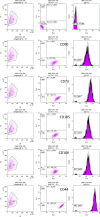


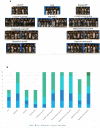

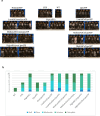


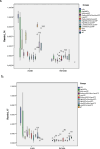

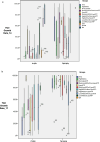



References
-
- Hinnant T, Lechler T. Hair follicle stem cells feel the pressure. Cell Stem Cell. 2022;29(1):1–2. - PubMed
-
- Xie Y, Chen D, Jiang K, Song L, Qian N, Du Y, et al. Hair shaft miniaturization causes stem cell depletion through mechanosensory signals mediated by a Piezo1-calcium-TNF-α axis. Cell Stem Cell. 2022;29(1):70-85.e6. - PubMed
MeSH terms
Substances
LinkOut - more resources
Full Text Sources
Medical
Miscellaneous

